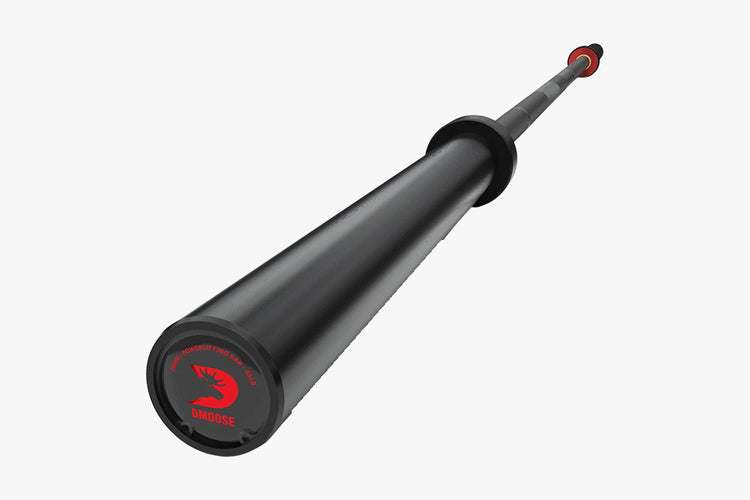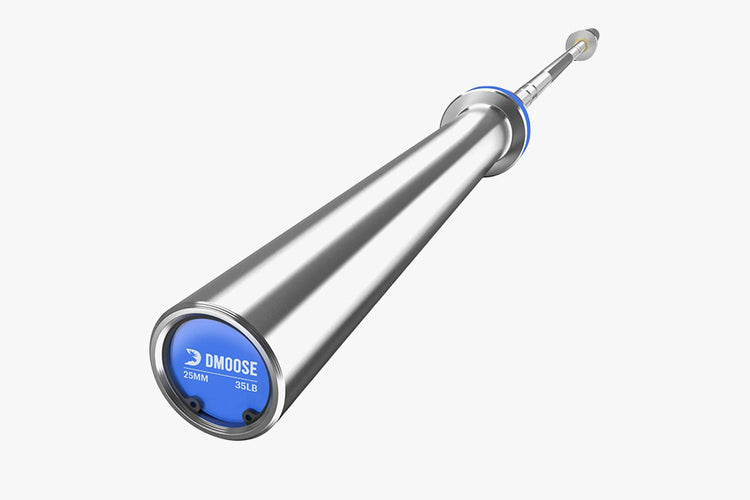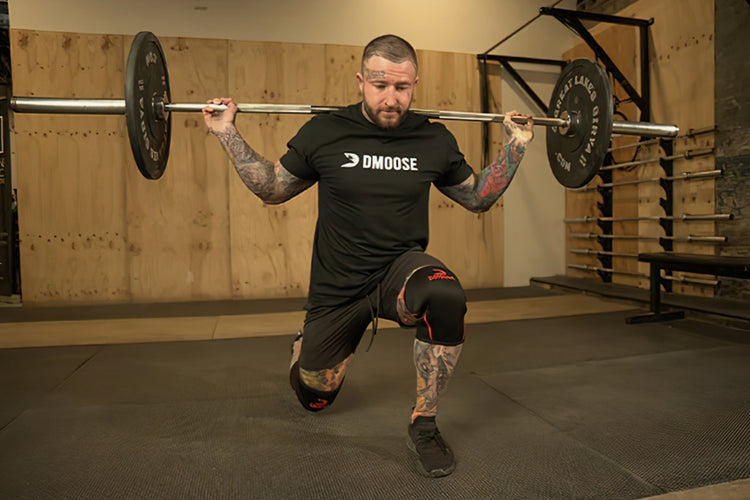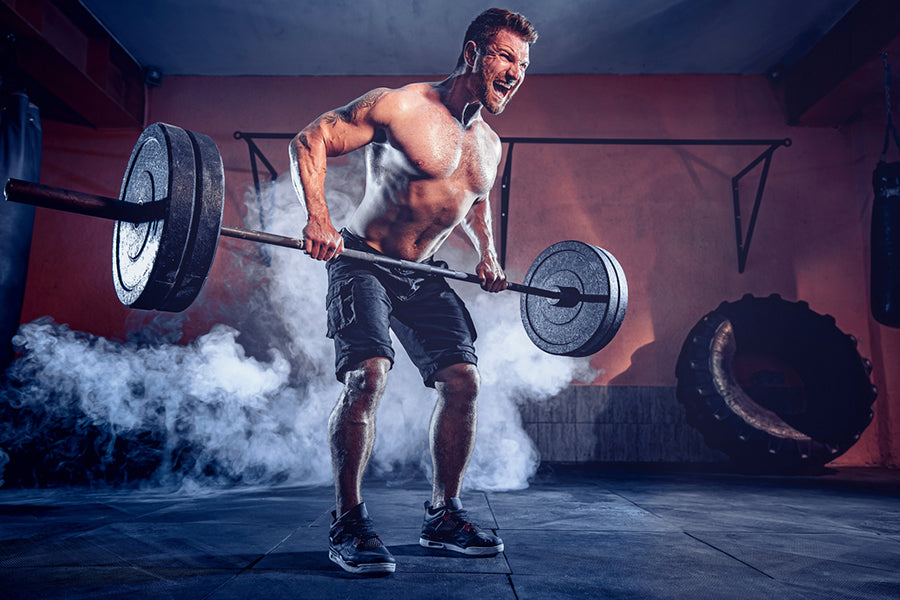In a world where the squat reigns supreme, and glutes are worshipped like Greek gods, there exists a mystical and mischievous creature known as the Squat Bar. This whimsical contraption can transform mortals into squatting champions or leave them sprawled on the gym floor in embarrassing defeat.
But here's the twist: people need to learn how much the Squat Bar weighs. It's like a never-ending riddle that taunts and teases the most dedicated lifters. Gym bros have debated this question for ages, with theories ranging from "It's as light as a feather" to "heavier than the entire cast of 'The Rock' combined."
In a hilarious attempt to uncover the truth, a band of brave and slightly delusional fitness enthusiasts set out to weigh the unweighable. Armed with their trusty protein shakes and an unhealthy dose of sarcasm, they embarked on an adventure that would forever change their squats and sense of reality.
Little did they know that the Squat Bar had a wicked sense of humour. The bar seemed to smirk as they approached the sacred squat rack, challenging them with its enigmatic weight. It whispered, "Are you ready for the ultimate test of strength and wit, or will you crumble under the weight of uncertainty?"
Join our merry band of gym adventurers as we embark on a quest filled with humour, questionable scientific methods, and many squats. The Squat Bar's weight may remain a mystery, but the laughs and gains along the way are guaranteed. Let the absurdity begin!
Related Article: 6 Uses of Barbell Squat Pad in Weightlifting
How Much Does a Squat Bar Weigh?

The squat exercise is widely recognized as one of the most popular and effective workouts for improving the appearance and strength of your core and lower body muscles.
While it is possible to perform squats without additional weights, incorporating weight into the exercise can significantly enhance its effectiveness and promote muscle gains. As you become more proficient in squats, you may desire to push your limits and further challenge yourself.
This is often achieved by adding weight to a barbell you hold during the exercise, enabling you to increase the load and intensity of your squats progressively. By gradually increasing the weight, you can continue stimulating your muscles and achieve greater strength and muscle development over time.
Related Article: Build a Bigger Squat: 12-Week Periodized Squat Program
The Different Types of Squat Bars
When it comes to squatting, the barbell is an essential piece of equipment that allows you to add resistance and challenge your muscles. However, not all squat bars are created equal.
Various squat bars are available, each designed with unique features and benefits to accommodate different body types, fitness goals, and lifting preferences. Understanding the different types of squat bars and their associated weights can help you select the most suitable option for your specific needs.
1. Open Barbell

An open barbell refers to a type of barbell that is designed with open-ended sleeves, allowing weight plates to be quickly loaded and unloaded. Unlike other barbells that may have fixed sleeves or require collars to secure the plates in place, the open barbell provides convenience and efficiency in changing weights during workouts.
An open barbell typically weighs around 20 kilograms (44.09 pounds) for men's bars and 15 kilograms (33.07 pounds) for women's bars.
One of the key differences between an open barbell compared to other barbells is its versatility and adaptability. With the ability to quickly add or remove weight plates, athletes and fitness enthusiasts can easily customize the load according to their training needs. This feature is particularly beneficial for exercises that involve progressive overload, where incremental increases in weight are essential for continual strength and muscle gains.
Furthermore, the open barbell offers ease of use and saves valuable time during workouts. It simplifies the weight adjustment process by eliminating the need for collars or additional tools to secure plates. This is especially advantageous in high-intensity workouts or circuit training, where time efficiency is crucial.
The open barbell is famous for various fitness disciplines, including weightlifting, powerlifting, and functional training. Its versatility makes it suitable for various exercises, such as squats, deadlifts, bench presses, overhead presses, and more.
You can add DMoose open barbell in your training sessions for weightlifting and strength training, particularly for exercises like squats. This long and straight barbell typically weighs 45 LB, adhering to standard specifications in length and diameter, ensuring its compatibility with various exercises, including squats.
The barbell is designed with knurled hand grips, providing a secure grip during lifts, and it features sleeves at each end to hold weight plates securely in place. Constructed from high-quality steel, the DMoose open barbell boasts an impressive tensile strength rating of 150K psi, allowing it to bear a maximum load of 1000lb.
Its durability is further enhanced by a defensive back phosphate coating on the shaft and chrome coating on the sleeves, guarding against wear and oxidation, ensuring long-lasting performance.
Each DMoose open barbell is equipped with silicone rings that serve as colour-coded identifiers, making it easy to identify different weights. For example, the blue silicone ring represents a weight of 20 kg, while the yellow silicone ring signifies a weight of 15 kg.
2. Men's Olympic Squat Bar
Like the standard barbell, the men's Olympic barbell weighs 44 pounds and is utilized in various exercises. However, there are a few distinctions between the two. While they share the same weight, the men's Olympic barbell is typically 1 to 2 feet longer than the standard barbell. Additionally, the ends of the Olympic barbell are thicker and heavier, providing enhanced stability during Olympic lifts.
These design features make the men's Olympic barbell particularly well-suited for competitive sports, powerlifting, CrossFit, and Olympic weightlifting. It is commonly used for overhead presses, deadlifts, bicep curls, and squats.
Although standard barbells are more commonly found in local gyms, the men's Olympic barbell is known for its superior craftsmanship and ability to withstand heavy loads. This durability sets it apart, as standard barbells are more prone to bending over time when used with substantial weights.
3. Women's Olympic Squat Bar
Women's Olympic bars serve the same purposes as their male counterparts but are specifically designed and sized for female lifters. The most notable distinction is the weight of these barbells, which is lighter at 33 pounds. A narrower diameter accompanies this reduced weight to accommodate the typically smaller hands of women. Despite their lighter and thinner construction, women's Olympic barbells can still handle substantial weight without bending.
Even lower-cost options in the Olympic barbell category tend to maintain their structural integrity better than mid-range standard barbells. The narrower diameter of women's Olympic barbells allows for a more secure grip during exercises like bent-over rows or curls, making them ideal for individuals with smaller hands.
These barbells find extensive use in Olympic weightlifting competitions, powerlifting, and strength training. Moreover, they can be incorporated into various fitness regimens, including high-intensity interval training (HIIT), circuit training, or CrossFit-style workouts.
4. Powerlifting Barbell

Powerlifting barbells are typically available in different weights based on specific requirements and intended use. For men, the standard weight is around 44.09 pounds, while for women, it is approximately 33.07 pounds. However, manufacturers offer variations in weight, both lighter and heavier, to cater to different training scenarios.
Depending on the specific needs, powerlifting barbells can range from as light as 22 pounds for women or for technical training purposes to as heavy as 55 pounds for men. It's important to note that the weight of the barbell itself is only one aspect to consider, as the total load lifted also depends on the weight of the plates added to the barbell.
Powerlifting barbells are designed to handle heavier weights than Olympic barbells, particularly for power lifts such as the deadlift, which can become significantly challenging at the competitive level. Additionally, power bars have slightly closer and more rigid grips compared to Olympic barbells. Unlike Olympic barbells, power bars do not have rotating sleeves, which is essential for specific Olympic lifting movements.
Powerlifting barbells are highly suitable for strength training, specifically designed to promote muscle strength and size development. They are commonly used for bench presses, deadlifts, and squats.
You can incorporate the DMoose powerlifting barbell in your workouts to endure heavy loads and intense training sessions. Its high tensile strength rating empowers you to push your limits and enhance your performance. The barbell is designed for convenience, allowing you to drop and repeat exercises as needed during your workouts.
Constructed with durability, the DMoose powerlifting barbell features protective coatings and sleeves that safeguard it against wear and tear. The knurling pattern on the barbell ensures a secure grip, providing stability and confidence during lifts. Its ample loadable space and impressive weight capacity enables it to handle even the most demanding workout routines, prioritizing your safety.
5. Safety Squat Barbell
A squat bar, specifically designed for performing squats, is a specialized barbell that typically weighs more than a standard Olympic barbell. In this category, the barbell weight can vary.
One popular variation is the safety squat bar, weighing around 55 pounds, commonly found in commercial gyms. Safety squat bars feature shoulder and arm pads that provide additional comfort and support during squats.
These specialized barbells have a unique design with a curved central bar and handles, allowing for a more ergonomic grip while performing squats.
They are particularly beneficial for individuals with limited shoulder mobility or those recovering from injuries. Using a safety squat bar, athletes can maintain an upright posture during the squat, reducing stress on the lower back and shoulders.
The weight of safety squat bars can vary, but they generally exceed the weight of standard barbells, with some models weighing up to 65 pounds.
It's important to note that safety squat bars are different from deadlift bars, as the latter has a narrower diameter shaft and lighter weight. However, the safety squat bar can still be effectively utilized for deadlifts and is particularly useful for improving the form and technique of squats using a regular straight barbell.
The primary use of a safety squat bar is for heavy squats, offering a safer and more durable equipment option compared to standard barbells. Incorporating a safety squat bar into your training routine can enhance your squat performance while providing an added level of safety and comfort.
6. Regional Barbell

A regional barbell is specialized for regional and local weightlifting competitions. It is crafted precisely and adheres to strict standards and specifications for competitive lifting events. A regional barbell typically weighs around 20 kilograms (44.09 pounds). The weight of the regional barbell is standardized to ensure consistency and fairness in regional and local weightlifting competitions.
What sets the regional barbell apart from other barbells is its focus on meeting the specific requirements of regional competitions. It typically features a standardized length and diameter to ensure consistency in performance across athletes. The regional barbell is designed to provide a reliable and consistent lifting experience, enabling competitors to perform at their best.
In terms of construction, the regional barbell is built with durability and performance in mind. It is often made from high-quality materials such as top-grade steel to withstand heavy loads and intense training sessions. The barbell may also incorporate precision needle bearings, allowing smooth rotation and enhanced control during lifts.
The DMoose regional barbell is a high-quality and versatile piece of equipment designed to meet the demands of regional and local weightlifting competitions. This specialized barbell is crafted precisely to adhere to the strict standards and specifications required for competitive lifting.
The regional barbell features durable construction from top-grade steel, ensuring optimal performance and longevity. With a precise weight of 20 kilograms (44 pounds) and a standardized length and diameter, it provides athletes with a consistent and reliable lifting experience.
The barbell is engineered with precision needle bearings, allowing for smooth and efficient rotation during lifts. This ensures athletes can perform dynamic movements and lifts with enhanced control and stability.
Related Article: How to Choose the Best Barbell for Your Weightlifting Needs
What if the Squat Bar Is Too Heavy?

Considering weight bar weight limits is crucial when selecting the appropriate barbell for your fitness regimen. Each type of weight bar has its designated weight limit, and surpassing this limit can damage the bar and potentially injure the user.
Therefore, before engaging in heavy lifting and powerlifting exercises, it is essential to thoroughly examine weight-bar weight limits, whether you are utilizing powerlifting barbells or Olympic barbells. It is also advisable to consult the guidelines provided by the International Powerlifting Federation to understand the standardized weights and sizes for barbells.
To determine if your barbell has been inspected, tested, and certified, you can inspect the approved marks on its center knurling. Center knurling typically consists of a pattern of small ridges or diamond-shaped bumps created by machining the metal using a lathe or similar apparatus.
The purpose of center knurling on barbells is to enhance the lifter's grip during specific exercises. However, it is essential to note that not all barbells feature center knurling. Powerlifting bars or Olympic-style barbells are more likely to incorporate center knurling.
It is worth noting that the presence and type of knurling can vary among different manufacturers and models of barbells. Some barbells may possess aggressive knurling, providing a firm grip, while others may feature a gentler knurling pattern on the hands.
Standard Weight Bars
Weight bars that are considered standard can have weight limits that span from 200 to 300 pounds. However, there are also sturdier variants available that can withstand loads of up to 500 pounds.
In contrast, Olympic weight bars are designed to accommodate heavier plates commonly used in Olympic lifting, and their weight limits tend to be higher, ranging from 800 to 1500 pounds. These weight bars are specifically engineered to handle the demands of intense Olympic lifting exercises.
EZ Curl Weight Bars and Trap Bars
Weight bars in this category typically have lower weight limits than standard and Olympic bars, usually ranging from 200 to 400 pounds. Women's barbells in this category may also have lower weight limits, with some models supporting up to 200 pounds.
However, it's crucial to consider factors beyond weight limits when choosing a weight bar, such as bar quality, construction materials, and overall durability. Selecting a weight bar with a weight limit that suits your needs is essential, especially if you plan to lift heavier weights. Exceeding the weight limit can result in the bar bending or breaking, posing a safety risk. Additionally, consistently lifting weights close to or at the weight limit can lead to gradual wear and tear on the bar over time.
Always check the weight limit of your weight bar before use and ensure that you do not exceed its maximum capacity to prevent injuries and accidents. Regularly inspecting your weight bar for signs of wear and damage is also essential, and any worn or damaged bars should be replaced as needed.
By choosing the right weight bar and using it safely, you can enjoy a workout routine that is both effective and safe.
Related Article: What's the Importance of Thick Grip on Bars and Dumbbells?
Conclusion
Understanding weight limits is crucial when selecting the right weight bar for your fitness routine. Different weight bars, including standard, Olympic, and specialized bars, have varying weight limits to accommodate different lifting needs. Exceeding the weight limit of a bar can lead to damage and potential injury, emphasizing the importance of selecting a weight bar that aligns with your lifting goals and abilities.
However, weight limits should not be the sole consideration when choosing a weight bar. Factors like bar quality, construction materials, and overall durability also significantly ensure a safe and effective workout experience. Regular inspection of the weight bar for wear and damage is essential to maintain its integrity and prevent any potential accidents.
You can create a safe and efficient workout routine by adhering to weight limits, using proper technique, and regularly maintaining your weight bar. Whether you are a beginner or an experienced lifter, prioritizing safety and selecting the right weight bar will contribute to a successful fitness journey.














